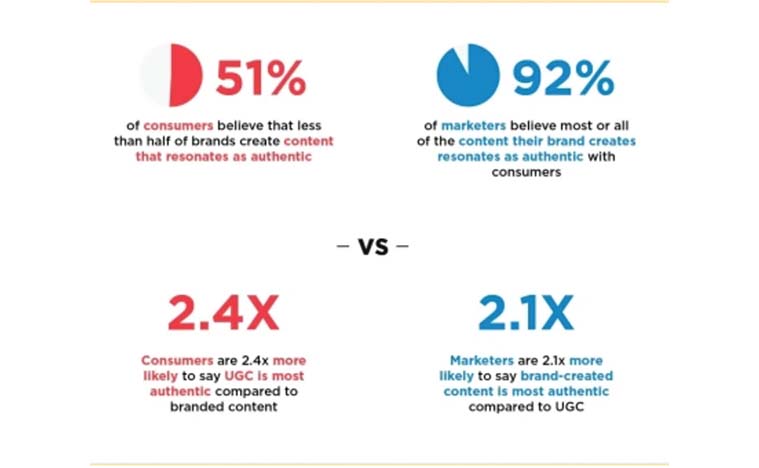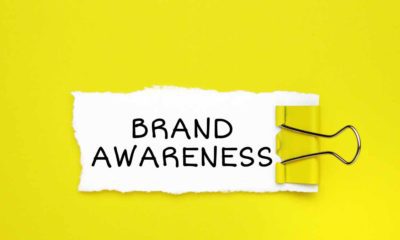Featured
User-Generated-Content (UGC) Marketing: What Is It and How Does It Work
In today’s digital age, the way that customers engage with brands and make purchasing decisions has changed dramatically. With the rise of social media and user-generated content, businesses must adapt their marketing strategies in order to stay relevant and effective. One key strategy that marketers and businesses are using today is User-Generated-Content (UGC) Marketing.
In this article, we’ll take a closer look at what UGC Marketing is, how it works, the benefits it provides, and why it’s important for businesses to use today. As well as the pros and cons to consider before implementing a UGC marketing strategy.
What is User-Generated-Content (UGC) Marketing?
User-Generated Content (UGC) is any form of content created by customers or users, rather than the brand or organization. This can include things like photos and videos, reviews and testimonials, social media posts, and blog posts.
UGC is often seen as more authentic and relatable than traditional marketing content. This is why it has become increasingly popular as a marketing strategy. UGC Marketing, then, is the process of using this user-generated content in a brand’s marketing efforts.
This can involve things like; reposting customer photos and videos on the brand’s social media channels. Also, displaying customer reviews on the brand’s website. Or running social media contests that encourage customers to create their own content.

Source: Business Wire
How Does UGC Marketing Work?
The process of UGC Marketing typically begins with a brand encouraging its customers to create content that relates to the brand or its products or services. We do this using things like social media contests, branded hashtags, or requests for reviews. Once the content is created, it can then be used in a variety of ways to support the brand’s marketing efforts.
One common way that brands use UGC is by reposting it on their own social media channels. This can help to increase brand awareness and engagement. This is because the content is often shared by the creator’s own network of friends and followers.
Another way that brands use UGC is by incorporating it into their website design. Such as displaying customer reviews or featuring customer photos on product pages.
Additionally, UGC can also be used in email marketing campaigns and ads. This can provide another way for brands to reach potential customers.
[Read More] 5 Marketing Trends To Watch For In 2023
Types Of UGC Marketing
When it comes to UGC, there are several different types of content that can be used in a brand’s marketing efforts. Some of the most common types include:
Photos and videos
This includes things like product shots, unboxing videos, customer reviews and testimonials, and customer-created tutorials and how-to videos. These types of UGC can be particularly powerful, as they allow customers to see the product or service in action and can be more engaging than text-based reviews.
Reviews and testimonials
This can include product and service reviews, as well as influencer reviews. These types of UGC provide customers with a glimpse into the experiences of other customers and can help establish trust and credibility with potential customers.
Social media posts and mentions
This includes Instagram and Facebook posts, Twitter and TikTok mentions, and other forms of social media content that relate to the brand. These types of UGC can be particularly effective, as they are often shared by the creator’s own network of friends and followers.
Blog posts and articles
This includes customer-created blog post reviews and user-generated buying guides. These types of UGC can provide more in-depth information and can be particularly useful for brands in niches where customers want to know more about the products or services before making a purchase.
What are the benefits of User-Generated-Content Marketing?
- Increased brand awareness and engagement: When customers see other people like them using and enjoying a brand’s products or services, they are more likely to trust the brand and consider purchasing from them. UGC allows brands to showcase the satisfaction of their customers in a more authentic way.
- Authenticity: UGC often has a higher perceived authenticity than traditional marketing content. As a result, this can make it more relatable and engaging to potential customers.
- Increased consumer trust: By displaying customer reviews, testimonials, and photos of satisfied customers, UGC can help establish a brand as trustworthy, which can lead to increased sales.
- Leverage Social Proof: UGC help to improve the perceived value of your brand. This is done by leveraging the principle of social proof. Simply put, people will follow the actions and behaviors of others in order to reflect correct behavior.
[Read More] How To Start Affiliate Marketing For Beginners In 2023
Why is it important for businesses to use UGC Marketing today?
With the rise of social media and online reviews, customers are increasingly turning to the opinions of their peers when making purchasing decisions. UGC Marketing allows businesses to tap into this trend by showcasing the experiences of real customers.
Which, in turn, can help establish trust and credibility with potential customers. Additionally, UGC Marketing also allows businesses to cut through the noise and stand out in a crowded digital landscape.
What Are The Cons Of User-Generated-Content Marketing?
- Difficulty in collecting UGC: Encouraging customers to create content can be difficult. At the same time, it requires effort to create a campaign that will resonate with the target audience.
- Lack of control over the message: With UGC, brands don’t have full control over the message or tone of the content. This can lead to negative or inappropriate content.
- Legal and compliance considerations: Brands need to be mindful of copyright and trademark laws when using UGC in their marketing campaigns. Additionally, they need to obtain permission from the creators of the UGC before using it.
- Time-consuming moderation: Brands need to monitor the UGC they receive and curate the appropriate content to use in their marketing.
In Summary
Overall, UGC Marketing can be an effective way for businesses to increase brand awareness, establish authenticity, and increase consumer trust. However, it’s important for businesses to weigh the pros and cons. While at the same time, consider the effort required to collect and curate UGC before implementing a strategy.
To ensure success, businesses need to obtain permission to use UGC, credit and acknowledge the creators, maintain authenticity and comply with legal and compliance requirements.
As with any marketing strategy, it’s also important for businesses to set goals and measure the success of their UGC Marketing campaigns. With the right approach, UGC can be a valuable asset for businesses looking to connect with their customers and stand out in a crowded digital landscape.
Josh Dylan is a California-based digital marketing and SEO expert. He grew up in Southern California before attending school nearby. Over his tenure in the marketing industry, J has led SEO-content strategy for multiple sites with millions of UVPM. In addition, J holds extensive experience in both in-house marketing teams and the agency side. With a specialty in search-engine optimization, and a strong knowledge of PPC/SEM, content, analytics, and more, J. Dylan is an all-around expert in all things digital marketing and regularly contributes to industry-leading platforms. As the owner of Something Incorporated (somethingincorporated.com), Josh continues to use his industry expertise to guide small and medium-sized businesses’ marketing strategies.











